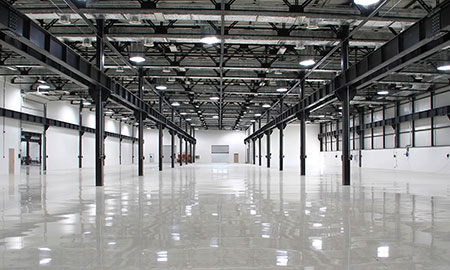
Epoxy floors
Epoxy floors are a beautiful addition to homes. This popular trend has quickly caught on; now, more homeowners prefer epoxy resins to any other flooring. Their shiny, textured surfaces are both visually appealing and practical to maintain.
However, weather, wear and tear, and incorrect installation can also affect epoxy flooring. Whatever the reason, it can be concerning to see your floors in poor condition.
For all these reasons and more, it is necessary to hire a reliable professional so you can be guided well. But before anything else, here’s a list of potential problems your epoxy flooring in Melbourne may encounter, along with their solutions.
Read, learn, and rise to the occasion!
1. Discoloured Epoxy Flooring
Discolouration of an epoxy floor is when the flooring turns yellow or into uneven tints. It is a frequent issue since resin and activator are problematic ingredients. If you or the company that installed the flooring makes any of the below errors, your epoxy floor can get stained.
- Ignoring the pot life of epoxy is a mistake. The pot life of epoxy is the time it takes to double the viscosity of the combined resin and hardener. If you wait too long, the resin may not adhere properly. It will also turn yellow gradually.
- Each resin requires a certain ratio of activators to harden. An inadequate hardener compromises the final product’s colour.
- New epoxy might get discoloured when exposed to substances like carbon monoxide. Depending on the chemical, your epoxy floor might become yellow or another hue.
- Even if the resin has already hardened, sunlight or UV light causes it to darken. Depending on how frequently sunlight hits the resin, you can see a pattern or different hues of discolouration.
To confirm discolouration, scrape away a bit of the top layer in any discreet area and check the difference. If the difference is drastic, there is discolouration. It can be easily fixed by recoating after due maintenance if it’s a small area.
2. Peeling of Epoxy
Sometimes, epoxy flooring may peel or tear. It creates an uneven surface and an unsightly appearance. This can even damage the concrete floor under the resin as dirt, water, and oil can penetrate through the cracks.
Peeling can happen for various reasons. One significant reason, however, is the weather condition during its installation. The floor may peel or come off if the temperature is too high or too low during the application.
To avoid this problem, your contractor will ensure the following before applying the epoxy.
- Whether the floors are clean of dust and debris
- If the floor is dry enough after washing it or removing the old epoxy
- Whether the floor is too smooth for the epoxy resin to bond, it must be rough for the epoxy to adhere well to it.
Thus, if the resin hasn’t been poured yet, you can talk to your worker and make sure these conditions are met. But if it’s already applied and you notice peeling, you may still be able to fix it.
If the damage is too much, your contractor may need to remove the damaged epoxy. They may use grinders and other handheld tools for the removal. Then, the workers will clean the dust created during the process and check if all the damaged resin is cleared.
Now, new epoxy coating takes place.
3. Epoxy Floor Blisters
Epoxy flooring issues include pinholes, cratering, and bubbles, giving the surface a blistered appearance.
Blistering may happen for the same reasons as resin peeling. You notice bubbles if the temperature is too low or your curing resin exposes to direct sunshine. Some more reasons can be as follows.
- If the worker combined the resin and hardener too rapidly, it could create air bubbles in the mixture. These bubbles may have stayed even during the application.
- Porous concrete floors can sometimes enable air to rise beneath the epoxy as it cures. These bubbles are trapped by the resin layer above. As the epoxy hardens, the air pockets may rise, resulting in pinholes or craters.
- The ratio of hardener to epoxy resin must be exact. Any inconsistency may end up creating blisters. The ratio changes from product to product; thus, professional installation is essential.
- Hasty installations are also one reason for blistering epoxy flooring in Melbourne. Professionals work quickly to prevent the resin from curing before application, but they need to do it with caution to prevent forming bubbles.
- Further, if you don’t give each layer enough time to dry, you run the danger of adding a new epoxy coating to a foundation that hasn’t fully hardened.
All these reasons lead to a blistering epoxy. A professional will understand the ways to fix it, but for your understanding, you can keep these in mind.
An easy solution is for professionals to sand off a coating of epoxy. Then they buff the surface and prepare it for a new layer of epoxy. It should work if the bubbles are temporary.
Conclusion
Epoxy floors are trending nowadays. However, caution is necessary during installation. One thing to remember—never try DIY for installing epoxy indoor floors. There are things that we can DIY and things that we can’t.
Leave it to a professional for a top-class finish!
Here’s our recommendation: Excon Group is a wonderful provider to partner with for epoxy floor installations. They house a broad range of professionals with great experience and skill, so your epoxy outdoor floor is in good hands.
We hope you stay wary of these common problems with epoxy floors!



